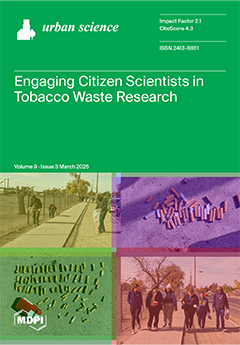The rapid expansion of built-up areas (BUAs) requires effective spatial and temporal monitoring, being a crucial practice for urban land use planning, resource allocation, and environmental studies, and spectral indices (SIs) can provide efficiency and reliability in automating the process of BUAs extraction.
[...] Read more.
The rapid expansion of built-up areas (BUAs) requires effective spatial and temporal monitoring, being a crucial practice for urban land use planning, resource allocation, and environmental studies, and spectral indices (SIs) can provide efficiency and reliability in automating the process of BUAs extraction. This paper explores the use of nine spectral indices and sixteen thresholding methods for the automatic mapping of BUAs using Landsat 8 imagery from a semi-arid climate in Morocco during spring and summer. These indices are the Normalized Difference Built-Up Index (NDBI), the Vis-red-NIR Built-Up Index (VrNIR-BI), the Perpendicular Impervious Surface Index (PISI), the Combinational Biophysical Composition Index (CBCI), the Normalized Built-up Area Index (NBAI), the Built-Up Index (BUI), the Enhanced Normalized Difference Impervious Surfaces Index (ENDISI) and the Built-up Land Features Extraction Index (BLFEI). Results show that BLFEI, SWIRED, and BUI maintain high separability between built-up and each of the other land cover types across both seasons, as evaluated via the Spectral Discrimination Index (SDI). The lowest SDI values for all three indices were observed for bare soil against BUAs, with BLFEI recording 1.21 in the wet season and 1.05 in the dry season, SWIRED yielding 1.22 and 1.08, and BUI showing 1.21 and 1.08, demonstrating their robustness in distinguishing BUAs from other land covers under varying phenological and soil moisture conditions. These indices reached overall accuracies of
,
and
, respectively, in wet conditions, and
,
and
, respectively, in dry conditions. The assessment of thresholding methods reveals that the Minimum method resulted in the highest accuracies for these indices in wet conditions, where bimodal medium peaked histograms were observed, whereas the use of Li, Huang, Shanbhag, Otsu, K-means, or IsoData was found to be the most effective under dry conditions, where more peaked histograms were observed.
Full article





